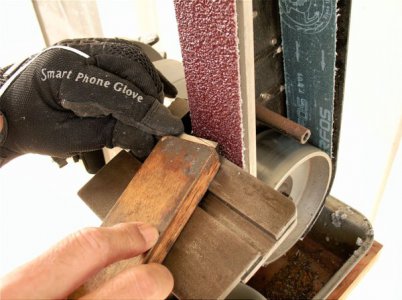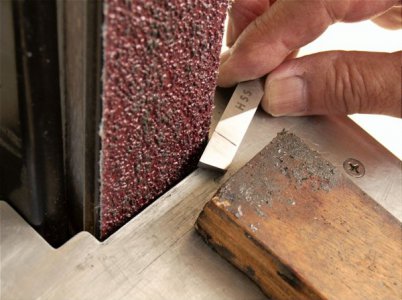- Joined
- May 9, 2014
- Messages
- 415
Mike- that Veritas is a thing of beauty! Copied picture so I can use it to make one.
Thanks!
Thanks!
Mikey, I'm a bit confused when you say the belt is exposed on the right side. The one I linked to appears to be unobstructed to at least the same degree as the Grizzly you linked to. It also appears to have a far more substantial, work table with a more accurate means of setting the angle. It isn't really clear in the photos but the adjustable table shown on the disk side can be moved to the belt, which places it above the disk, so wide open from both sides.
I suspect I'm not understanding what you mean when you say the belt is open on the right side.
I've read your tool sharpening with a belt sander post, and know you don't like 1" belts, but is there a reason to avoid 4 or 6" belts? 2" doesn't appear to be a popular size, most that I'm seeing are light units with 1" belts, and then more substantial ones with 4-6".
Here is another Grizzly with a 4x36" belt and a disk sander. You can hit the 360 icon below the photo which will rotate the machine allowing a good view of all sides.
http://www.grizzly.com/products/Com...547?utm_campaign=zPage&utm_source=grizzly.com
This attachment costs as much as a half decent grinder, but perhaps this might be worth a look?
http://www.eastwood.com/multitool-2...V_9OUQaT245cBvvpznXhCVXMc7ZHtXahoC8OgQAvD_BwE
Thanks


